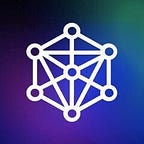What is Data Aggregation and how can you automate it using low code?
Data aggregation is the process of gathering large amounts of information from multiple data sources and organizing it into a more consumable and comprehensive medium to consume on the frontend for data visibility or processing.
Data can come from multiple sources, which poses the question of how to manage multiple data sources as it is constantly evolving, expanding, and becoming more complex.
Since every other application depends on data, integration is one of the most important aspects.
Integration and management of data come with challenges, including complex setup of multiple integrations, scaling requirements, a variety of data formats, various types of endpoints, expert developers are required to manage the integration and more. This process demands a lot of time and manual work.
This is where a low-code platform can help immensely
By integrating data with low code, you can transform data, reduce time spent due to manual processes, build integrations quicker, and can help your business for a faster go-to-market. 🚀
By automatizing the integration process, you can:
- Focus more on the outcome and ideation
- Reduce manual work and maintenance
- Lower the barrier for people who wish to connect data endpoints
- Gain more transparency and control
A low code platform for data integration will directly influence business metrics and benefit your daily tasks too.
Integrate with Canonic and optimize the workflow
Building Canonic’s integrations is a lot faster and scales with your business. You can integrate amongst all the different services out there and create much more customized workflows based on triggers or based on time. With the built-in code editor, you can add all the different logic directly in code to build your workflow. You can also pair up integrations with a data source.
Having the ability to add different integrations and pair them together without losing context allows users to automate multiple different actions without triggering a separate workflow for each integration or data source.
Connect multiple data sources without the development overhead.
We are celebrating #30DaysOfCanonic! Every day we will cover guides, how-tos, and blog posts on what you can build on Canonic. Learn More
